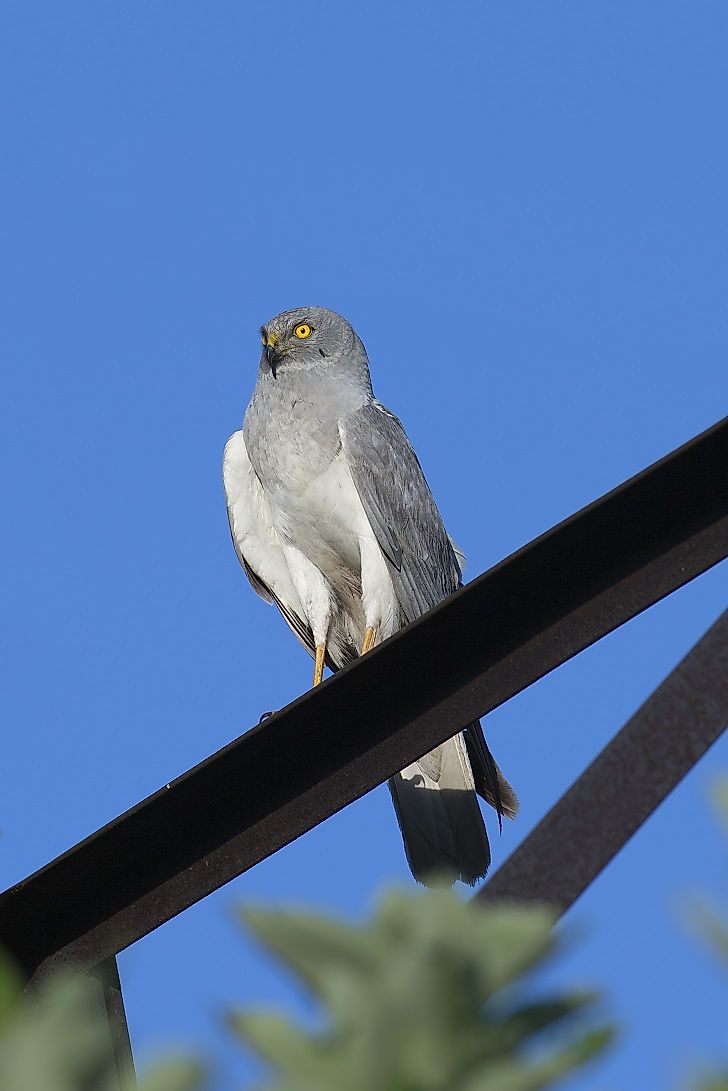Hen Harrier Facts - Animals of North America

5. Physical Description
The Hen harrier, as it is known in the UK, is commonly known as the Marsh hawk in the U.S., and is one of the most hunted raptors (or birds of prey) in Scotland and England. In the scientific world, these birds are named Circus cyaneus, and belong to the Family Accipitridae. The North American hen harrier is classified as Circus cyaneus hudsonius, with the European hen harriers being known as Circus cyaneus cyaneus. The female hen harriers are easily distinguished from their male counterparts through the appearance of their plumage and their weights. The female is heavier and is often called ring-tailed, because of its white-colored upper tail coverts. The young ones share the same coloring as the females, while the males are pale gray with white underbellies. These birds are typically medium-sized, with long tails and wings being characteristic of their species.
4. Diet
95% of the hen harrier’s diet is comprised of such rodents and other small mammals as voles, mice, and squirrels. They are strictly carnivores, so fruits, vegetables, and leafy shrubs won’t receive much attention from them. Hen harriers are built for soaring in the sky, and aren’t ill-equipped hunters at all considering their hooked bills, keen eyes, and exceptional hearing. They are adept at catching their prey off guard. Using their quick and low-flying techniques, they will often swoop down upon spotting frogs, insects, rabbits, and even mature ducks on the ground. Hen harriers aren’t above hunting other birds either, with larks, waterfowl, and sparrows being among their particular favorite fellow avian varieties to dine upon.
3. Habitat and Range
The hen harrier breeds in Eurasian countries, as well as in the United States and Canada. They are found all throughout the year in Great Britain and France, while they fly south during winter especially to warmer regions like Asia, Mexico, Central America, and Southern Europe. At present, the hen harrier has an estimated population of 1.3 million. Its numbers have shown considerable decline over the past couple of years, although the International Union for the Conservation of Nature has classified them as animals of "Least Concern", owing to the fact that the decline did not go over the 30% threshold in the last ten years leading up to the classification. In England, however, major efforts to conserve these birds are currently underway due to the fact that in 2015, only four breeding pairs were recorded in the entire country. In Ireland, meanwhile, hen harriers have been "Amber listed". Like most animals in the wild, losses of their natural habitats is the main reason why the hen harrier populations keeps going down, especially since they live in open environments like vast moorlands, swamps, farmlands, prairies, and coastal marshes, which are especially susceptible to both climate change and human development activities.
2. Behavior
The hen harrier migrates solo although, during breeding season, the male members of the species have been observed to mate with more than one female. Like most birds of prey, they are territorial, and will display aggressive behaviors when protecting either their mates, their nests, or their respective habitat ranges. Hen harriers' talons are quite effective at warding off potential predators, especially those that threaten their young ones. During winter, they may roost alongside other birds, particularly in open country, and most commonly do so in the company of marsh harriers and merlins.
1. Reproduction
The hen harrier prefers to nest in open sites, such as grasslands and bogs. Their eggs are whitish in color, and number up to eight per annual laying. Unlike other hawks, this bird is not monogamous, and will mate with several partners during the course of a breeding season and from year to year. Egg incubation takes approximately four weeks, with most of the work done by the female in keeping them warm prior to hatching. The male is instead tasked with hunting for food, often passing it to the female who will then regurgitates it up for the pair's young nestlings. The female hen harrier does not start to breed until her second year of life while, the males will reach sexually maturity at around three years of age.











